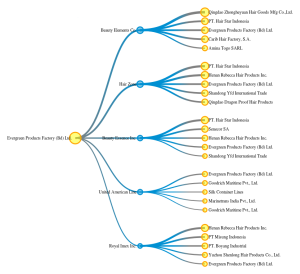Exporters sweep for the second week in a row. This brief respite is counter to the long term trend. While some people are whispering about an impending US recession (see below) the economy is still growing.
No progress on the Ex-IM Bank, with a vote to be held on October 26th. Exporters, you should let your representative know how you feel on the issue. We are talking about a program that makes money for the government and helps 1,000’s of small businesses.
A common fear being paraded by politicians of all stripes is that China will at some point sell their US bonds and cause pain in the bond markets. The idea is that if China is not a net buyer, borrowing rates for the US will go up, disrupting banks and hurting the government budget. This very scenario has been playing out, with no problems. Domestic demand for bonds has picked up the slack, preventing a rise in rates. The downside of this domestic demand is that it bodes ill for the future, for when domestic markets prefer bonds, they feel that a recession is coming.
Other US economic data for this week is here.
Who won the battle last week, between the USD and five currencies? The perspective is strictly from America, so if against the Aussie Dollar, United States importers won, that also means Australian exporters won as well. I am changing the sign convention: negative percentage changes mean that exporters have the advantage while positive numbers show the advantage for importers.
| Currency | Week Ending 10-9-15 | Weeks in a Row | Weekly Change | YTD Change |
| Australian Dollar (AUD) | Exporters Win! | 1 | -0.8% | 10.45% |
| Canadian Dollar (CAD) | Exporters Win! | 1 | -1.0% | 9.63% |
| Euro (EUR) | Exporters Win! | 1 | -0.7% | 5.97% |
| British Pound Sterling (GBP) | Exporters Win! | 1 | -0.7% | 0.69% |
| Japanese Yen (JPY) | Exporters Win! | 1 | -0.3% | -0.67% |
Thanks,
Damon










